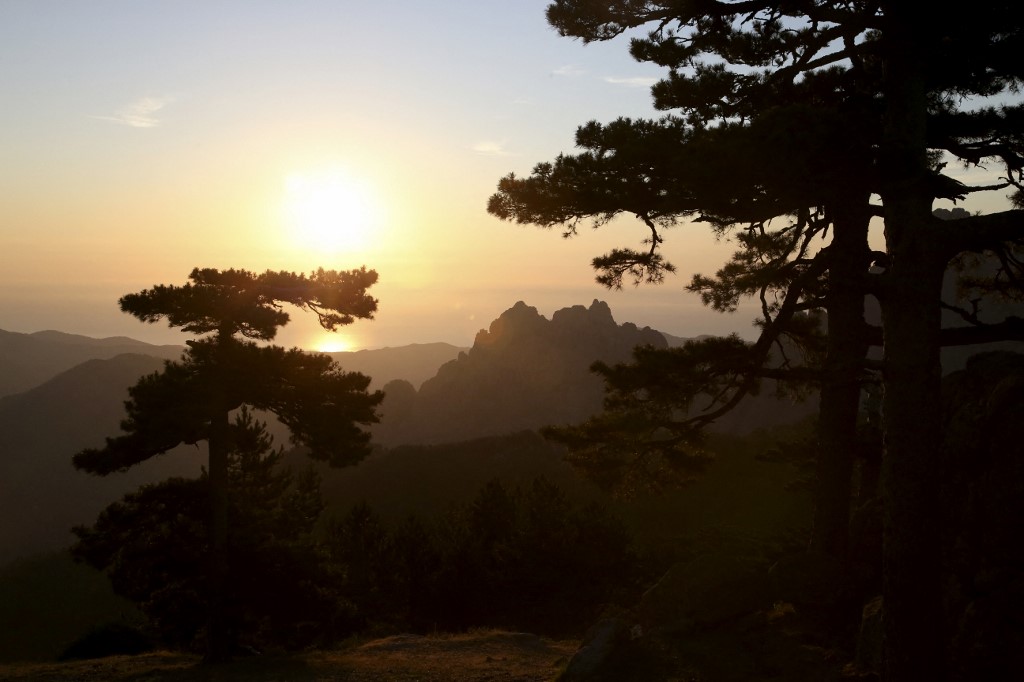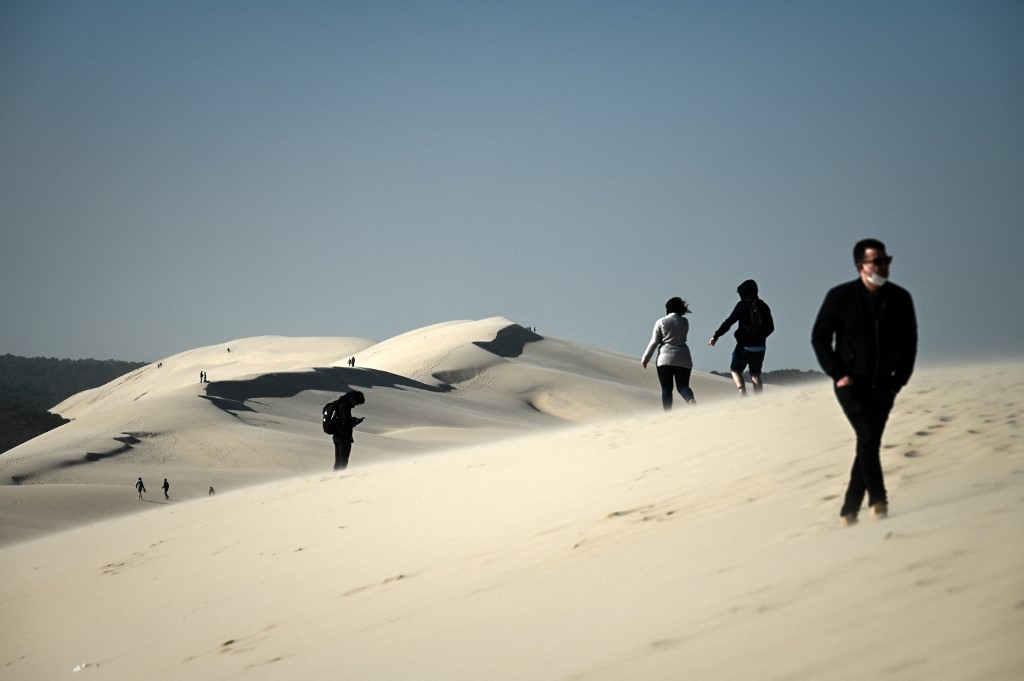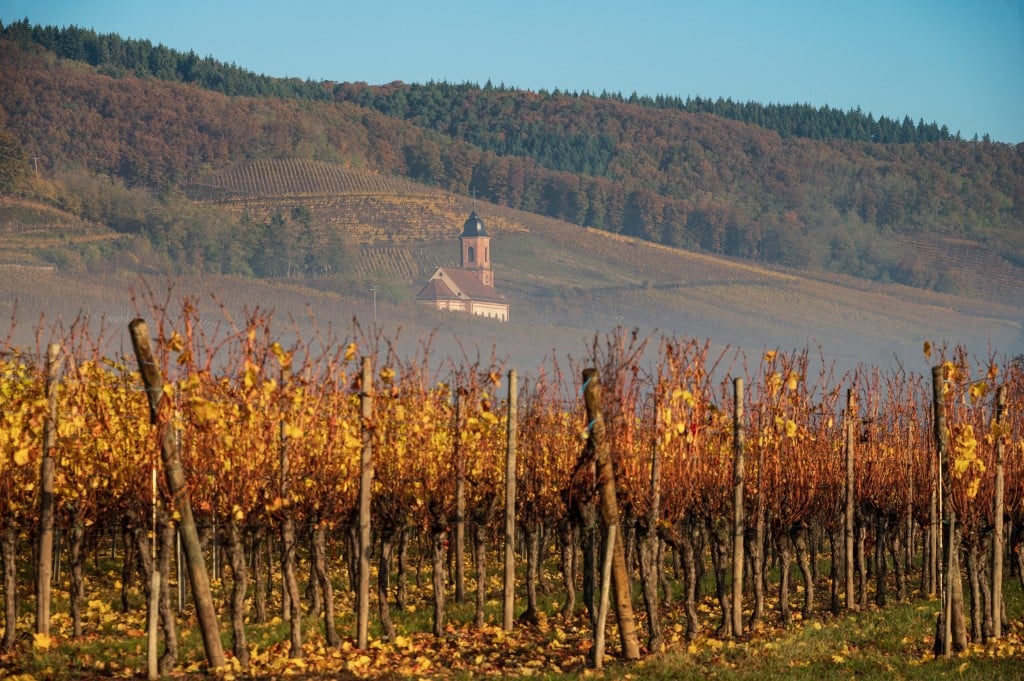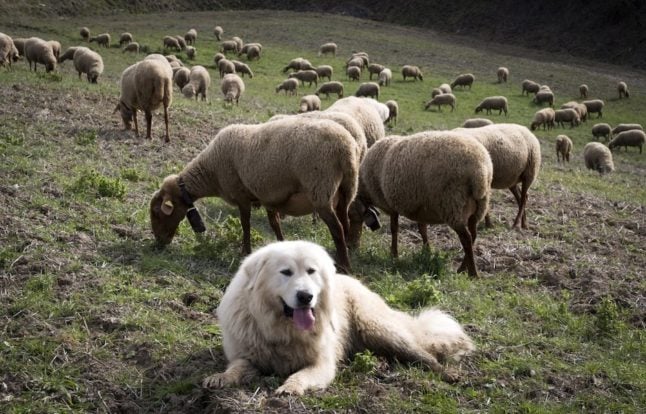France has a stunning array of natural landscapes, from mountains, to forests, via lakes, rivers and beaches.
The Spring can be a great time to visit the country for a walking holiday. There are fewer tourists than during the Summer and warmer weather melts snow from the mountains.
Here is our pick of the best hiking trails to visit this Spring.
Corsica
If you want a physical challenge, then the GR20 hiking trail is the one for you, running north to south across the entire island of Corsica for some 200 km.
It generally takes more than two weeks to complete so if you don’t have time on your hands, it is probably worth picking out a section. There are lots of places, including mountain huts, to stay along the way.
The journey traverses the island’s granite mountain tops, rugged hillsides and canyons.
The advantages of tackling this route in the Spring is that you won’t have the summer heat bearing down on you – although it is worth packing the suncream nonetheless as you will reach more than 2000m in altitude and be exposed to the elements.
There are plenty of easier hiking routes in Corsica if you want the Mediterranean climate without the gruelling exertion.

Caroux (Occitanie)
Situated in the Hérault département of Southeast France, there are plenty of beautiful hikes to be done around Mont Caroux.
The area is rich in volcanic rock which reflects the light is a very distinctive way – so much so that the mountain is sometimes referred to as montagne de lumière (mountain of light).
Easy routes include Palombières to Saint Pons de Thomières which takes about two hours and offers magnificent views of the Jaur valley and Saint Pons itself.
A medium-difficulty trail runs between Les Marbrières to Félines Minervois and takes about four and a half hours. You will pass through a number of flowering meadows, marble quarries and the ruins of an old castle in Ventajou.
Hardcore hikers could look at tackling the route between the Roc du Caroux to Rieu Tor. The journey takes about ten hours and is physically demanding. You will spend at least two hours scrambling up steep paths and will need upper body strength to manage some of the semi-climbing sections. You will pass very few other hikers and will potentially have some vertigo-inducing moments.
Because this hike is at high altitude, be sure to check the weather conditions beforehand.
Somme (Hauts-de-France)
History buffs will enjoy a hiking route in the Somme, known as the Remembrance Circuit, which runs between a number of WW1 battlefields.
In late Spring the red poppies, which have become emblematic of WW1 remembrance, bloom across the area.
Overall, the trail is 92km with 48 different paths so it is worth doing some research about which part you want to do before setting off.
There are also a number of guides who offer tours of the battlefields themselves.
The Remembrance Circuit is not far from the Baie de Somme which is a beautiful coastal area and a nice place for more casual walking.
Verdon Gorge (Provence-Alpes-Côte-d’Azur)
The Verdon Gorge is a large river canyon in the southeast of France.
One of the most famous hikes in the area runs along the Sentier Blanc-Martel (the Blanc-Martel trail) and is 16km one way. It takes about six hours to complete for physically fit hikers.
Along the way, you will get breathtaking views of the limestone valley, pass through tunnels and encounter a number of swimming spots.

There is a shuttle bus that can take you to the starting point or pick you up at the end.
Make sure to bring proper hiking shoes, water and a torch.
Eze (Provence-Alpes-Côte-d’Azur)
The medieval hilltop village of Eze marks the beginning of a hike known as the Nietzsche Path, named after the German philosopher who once walked along it.
This is a fairly challenging hike shaded by trees and with some stunning coastal panoramas – on a clear day, you can see all the way to Italy and Corsica.
A long portion of the walk follows a steep stone stairway and in total, it takes about one and a half hours, finishing at Eze-sur-Mer – a seaside town with great swimming spots, restaurants and hotels.
Eze can be easily reached from Nice, which is less than 20 km away.
If you are in the area, it would also be worth checking out the Route Napoléon, which forms part of the old pilgrim route known as the Camino de Santiago.
Starting in the Basque town of Saint-Jean-Pied-de-Port, this 25 km hike is not for the faint-hearted and ends in the ancient Spanish village of Roncesvalles.
Arcachon (Nouvelle-Aquitaine)
Birdwatchers will love Arcachon and particularly the marshland nature reserve known as the Réserve Naturelle des Prés Salés, where you will see up to 170 different species including the Kentish plover.
A 12 km loop trail runs through the area and is a gentle journey suitable for families and youngsters too.
You can also visit the Dune du Pilat – a surreal sandbank that never looks the same because of the constantly changing winds and tide.

Another bonus of visiting Arcachon is that the area has a number of great fishing, paragliding, sailing and surfing spots.
Luberon (Provence-Alpes-Côte-d’Azur)
Nestled in the sub-alpine mountains of southern France, Luberon is an area of stunning natural beauty with options for hikers of all abilities.
One route from Gordes to Roussillon runs for 10km along scenic hilltop roads before finishing at a village perched on the edge of an earthy cliff.
An all-day hike can also be done from Roussillon to Lourmarin, which is often considered one of the most beautiful spots in the country. It runs for 25km but is relatively accessible and sheltered by olive trees and orchards. Loumarin also hosts regular farmers markets where you can sample authentic Provençal produce.
Luberon is a good area for nature lovers and has a rich biodiversity including more than 1,500 plant species and at least two kinds of eagle.
Alsace
If you struggle with the heat, the forested area of eastern France known as Alsace could be a good option for you.
You can try the 8km leisurely hike between Bergheim and Riquewihr. Both medieval towns are completely charming and surrounded by some of the country’s finest vineyards. As you stroll between them, passing small hamlets along the way, you will feel as if you are a character in a Disney film.

This part of the country falls within a UNESCO site known as the Parc Naturel Régional des Vosges du Nord, which contains striking rock formations and the remains of 12th century castle called the Château de Schœneck.
Cirque de Gavarnie (Occitanie)
The Cirque de Gavarnie offers some of the best hiking in the whole of the Pyrenees – and the snow melt in mid to late spring makes it a popular spot.
The area is composed of a ring of mountains – once described by Victor Hugo as “the Colosseum of nature” – with a lush green area in the middle and the highest waterfall in Europe (the Gavarnie falls). It is the product of more than 50 million years of glacial erosion
The Cirque de Gavarnie is a UNESCO heritage site.




 Please whitelist us to continue reading.
Please whitelist us to continue reading.
Member comments